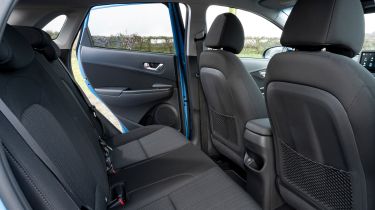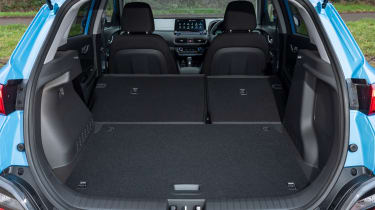Hyundai Kona SUV - Practicality & boot space (2017-2023)
Some rivals offer a bigger boot and a more spacious cabin than the Hyundai Kona
Hyundai Kona interior space & storage
The look of the Kona from the outside might give you the impression it's a fairly chunky SUV but the reality is that the Kona has less rear passenger space than most family hatchbacks and quite a few of its rivals. If you envisage regularly giving lifts to people six feet tall or over, then the Citroen C3 Aircross offers more rear space generally. With two fairly tall adults in the front seats of the Kona, rear knee and legroom looks tight in the back, so it’s better suited to smaller adults and kids. The 2023 Hyundai Kona is expected to offer more rear space to address this downfall.
Boot space
The Kona offers a maximum boot space of 374 litres behind the rear seats, which increases to 1,156 litres with 60:40 split-folding rear seats folded flat. This trails the 400 litres offered by the SEAT Arona and the 410-litre boot of the Citroen C3 Aircross. It's a shame the rear bench doesn't slide like in the Renault Captur, giving the owner more flexibility to boost passenger legroom or luggage space depending on the situation.
Fit a space-saver spare wheel and boot space reduces to 334 litres/1,116 litres with the rear seats up and down. There’s nothing particularly clever or innovative about the boot either, adding to the sense that the Kona is merely average in the practicality department.
Towing
The 1.0-litre petrol model of the Kona has a maximum braked towing weight of 1,200kg. The Hybrid can actually tow 100kg more; the Kona Electric can’t tow at all. Thanks to its extra power and beefy brakes, the Kona N can tow up to 1,600kg.










